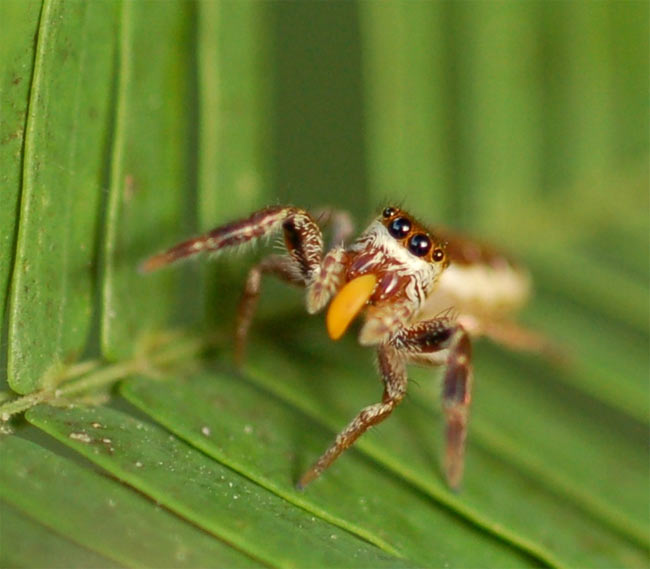Scientists Look to Spiders for Hi-Tech Fibers

The unanswered questions behind a spider’s cunning ability to spin silk, which is tougher than any man-made material, have hampered its use in everything from medical tools to next-generation electronics. Now scientists think they have the tools to unlock these secrets – opening the door to better brain implants, new drug-delivery systems, and degradable and flexible electronics.
Silk – the fiber spun by silkworms and spiders – has a lot going for it. It’s stronger than any synthetic material, rivaling even bulletproof Kevlar. It’s also flexible, durable and biodegradable, and can withstand extremely high temperatures. Until recently, however, much of silk's potential has remained relatively untapped.
Two big challenges stand in the way of creating synthetic silk that rivals that made by insects, said David Kaplan, a biomedical engineer at Tufts University in Massachusetts.
The first challenge, Kaplan said, is to figure out how to reverse engineer the spider's silk, essentially turning back the clock to an earlier step in the process when the silk is just a soup of chemicals.
The second challenge is to figure out how to make enough of the silk. “Assuming we continue to see this progress in using silks in all sorts of materials, you’re going to have to find ways to produce more silkworm silk as well as spider silks. And at least by today’s technology, we’re not there," said Kaplan, who is a co-author of a new review paper about the state of the silk-making field.
Hi-tech silk
Researchers envision silk being used to make a broad range of products, including implantable electrodes, medical sutures, ligament and bone tissue repairs, and flexible electronic displays.
Sign up for the Live Science daily newsletter now
Get the world’s most fascinating discoveries delivered straight to your inbox.
Implantable electrodes would take advantage of silk’s ability to degrade in the body, as well as its flexibility, allowing it to conform to the grooves and curves of human tissue. Electrodes printed onto a silk substrate have been used to monitor and record a cat’s brain function. Once placed on the brain, a small amount of salt solution is used to dissolve the silk.
Silk also has unique optical properties, which could be exploited in biodegradable and flexible electronic displays. One example here would be a color-changing hologram coated onto a silk substrate.
The ligament and bone tissue applications will take advantage of silk’s unique toughness.
Biomimicry
In order to morph silk into these various uses and products, scientists have to dissolve the silkworm-spun fibers into a solution of protein and water.
A lot of work is ongoing in this area, the researchers found. And while today’s reformatted silk is “good enough” for some applications, it’s not yet suitable for making next-generation materials that can rival Kevlar.
“If you wanted to take that reconstituted material and re-make the native fiber from it, you won’t get the same properties,” Kaplan told TechNewsDaily. “So we still have a ways to go in terms of understanding some of the subtleties that are involved to be able to achieve that goal.”
Getting there, however, is “just a matter of continued material science and engineering effort,” Kaplan said. “That’s just a matter of time and insight.”
Scale-up
When science does achieve near-to-nature silk, and more products rely on it, the silkworms won't be able to keep up. “For the yield issue, as more and more of these technologies develop I think we’re going to need more sources of silk,” Kaplan said.
Genetically engineered plants and animals will likely become those other sources, he said. But to do this, some of the mysteries of the insect-spinning process must be better understood.
The bacterium E. coli could be up to the task of churning out silk. “We and others have looked at how to improve yields of recombinant silks in E. coli but most of those studies are not with full-length native silks; they’re usually with truncated or shorter versions of silk,” Kaplan said. “So you’re missing some of the essential domains or parts of silk that need to be there."
The longer the molecules, the more complicated things get. For instance, scientists have yet to unravel how silkworms and spiders keep such high concentrations of protein in their glands without these long molecules clumping together.
While there seem to be a lot of factors in the way of creating plants and animals that can do what the silkworm does, only on a larger scale, in general it comes down to water, Kaplan said. The key will be understanding how to get rid of the water from the water-protein solution quickly while still maintaining the silk’s remarkable properties.
Unlocking these mysteries to develop genetically modified species that can make silk on a large scale is still at least a decade away, Kaplan said.
Kaplan and his colleague Fiorenzo Omenetto, professor at Tufts, published their review of silk in the July 30 issue of the journal Science.











